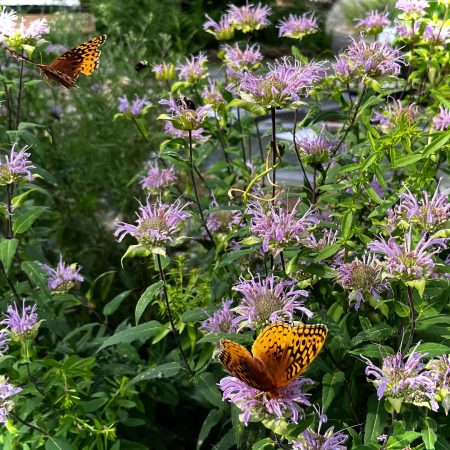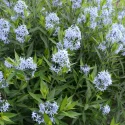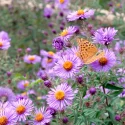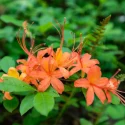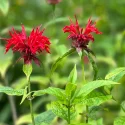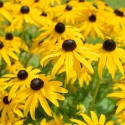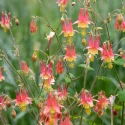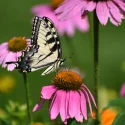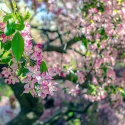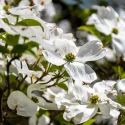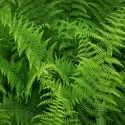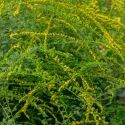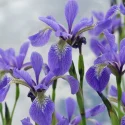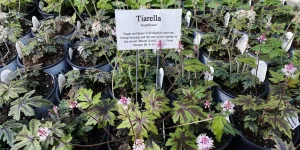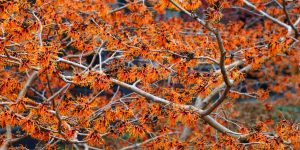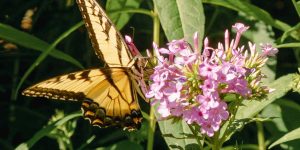Interview with Lisa Turoczi, Earth Tones Native Plants
Some people have a vision for the future and the drive to make it happen. Lisa Turoczi, founder of Earth Tones Native Plants, is one of them.
More than twenty years ago, she saw a critical gap in New England gardens—a need for organic, locally native plants. So, she built Earth Tones Nursery in Connecticut to fill it. With decades of experience helping gardeners reconnect with their local landscapes, Lisa has a wealth of knowledge to share, and we were thrilled to learn from her.
Thank you so much for the time, Lisa! Earth Tones has been around since 2004 (Happy 21st birthday to your business!) What inspired you to start the nursery?
Two moments come to mind. First, we had to drive to New Jersey to pick up plant material for a project in Connecticut because no one in Connecticut offered the plant! (It was Swamp Azalea.)
Another reason that sticks in my mind is a moment when I was at a large wholesale nursery buying plants for a client who wanted a butterfly garden. I was standing among all these flowers and realized something was missing: the sound of pollinators and the flutter of busy-winged creatures. The sound of birds was only in the distance.
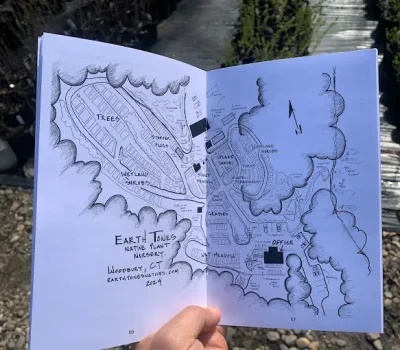
Then and there I realized we need to start a nursery that has native plants AND is organic. We needed to offer the plants and knowledge to the public. Just us, doing one landscape a week, for example, was not enough.
We needed to spread the word and get many people involved. We took a leap because it is so important to give back to the earth, to leave the place better than when we arrived.
Many beginner gardeners assume nurseries work like big-box garden centers. Can you share how a native plant nursery like Earth Tones is different?
Earth Tones ensures that when we hire people, they are inspired and passionate about the importance of native plants in the landscape.
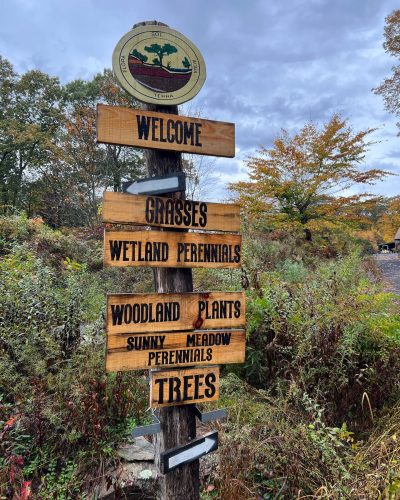
We embrace the customers who walk in. Sometimes they have come because they are curious, others are hard core eco gardeners! We take both seriously and answer any questions they have, if we can’t we end up looking into it for them and getting back to them with answers.
We also have display gardens. Plants for sale are grouped in the same type of ecosystem you would naturally find them in. For example, we have perennial wetlands, wet meadows, and rain garden plants grouped. We have upland shrubs in one area and shade-loving shrubs in another area sitting under the trees of the surrounding forest.
Earth Tones has such a unique approach, and it’s clear that your philosophy and values have been part of the nursery from the very beginning.
I’d love to dig into that more (pun intended!) Why grow locally native plants?
We locally source and collect our seeds from all over Connecticut. This is important because the insects, birds, and fauna in an ecosystem have co-evolved with the plants. Some birds have a certain size beak to consume certain berries. Migration patterns and berry set are related.
Another example of this co-evolution is caterpillars, which happen to be the main food source for many birds and eat plant leaves. Many plants produce certain toxins in their leaves to deter insects from eating them. But certain caterpillars have coevolved with the plants and now can consume those toxins unharmed. For instance, the monarch butterfly eats milkweed. If we introduce plants from a completely different ecosystem, the caterpillars in our region can not consume the non-native plants because their bodies can not digest/understand the new chemical.
Non-native plants may become a nuisance because they have no natural controls. Non-native plants then take up space in our yard and offer nothing for the fauna of the region.
The nursery is pesticide- and chemical-free. Why is that important for homeowners who want a healthy yard?
We grow organically at Earth Tones because we don’t want to poison the insects, birds, and other fauna that rely on the plants as a food source. We also don’t want people bringing anything into their yards that would harm them or pollute the groundwater.
This cultivar plant offers nothing to the greater system other than being just a curiosity.
Many traditional nurseries carry plants labeled as “native” but often sell cultivars. How does Earth Tones approach this?
We go for straight species because the symbiotic relationship and coevolution between the flora and the fauna is sometimes lost with cultivars. Native plants offer food sources with nectar, seeds, and berries. In return, they get pollinated so they can reproduce and continue.
Some of the native cultivars possess interesting curiosities, but in actuality, the twisted, multi-petalled, contorted flower, for instance, is so deformed that the pollinator can not find access to the nectar and can not pollinate the plant. The plant does not produce seeds or berries for the other fauna or reproduction. This cultivar plant offers nothing to the greater system other than being just a curiosity.
What a great way to frame this conversation. Many other non-profits and native nursery owners agree with you.
Now, let’s talk about getting started with native plants. Many suburban homeowners see lawns as “low-maintenance” and worry that native gardens require too much effort. How do you help beginners rethink that perspective?
Start small. Plant a native tree.
Then expand a garden over time under that tree.
Another small but mighty move is to ask them for a picture of the area, and make suggestions. “Oh, you need a screen from your neighbors? What are the soil conditions? How much sun does the area receive?” Then we bring them to the area where they can see the plants.
Another great tool we use is signage. Every plant is accompanied by signage that shows a picture and gives a description of the plant and its attributes.
Lisa Turoczi’s Tip for Starting a Native Garden
Start small: plant a native tree.
Then expand a garden over time under that tree.

Some worry native plants look “messy.” How can beginners create a structured, garden-like design?
We sell around 400 species of native plants, from trees to shrubs to perennials and grasses. The trick is to do a little research on the plants. Figure out how much area you have and then what height you ultimately want the plants to achieve.
There are many native plants that have the same aesthetic appeal as some of our non native plants typically chosen for formal type gardens:
- Inkberry instead of Boxwood
- Highbush Blueberry for its upright structure and red fall foliage instead of Burning Bush
- Shrubby St. John’s Wort for its tight, rounded shape and full blossoms
There are many perennials and grasses that hold their shape, have strong stems, and do not flop over. Penstemon digitalis—even after it flowers, its seed heads still look good through the winter.
What are some practical first steps for those battling invasive species in their yard?
Visit cipwg.uconn.edu, Connecticut’s Invasive Plant Working Group website. The site provides valuable tools for identification and different ways of removing invasive plants.
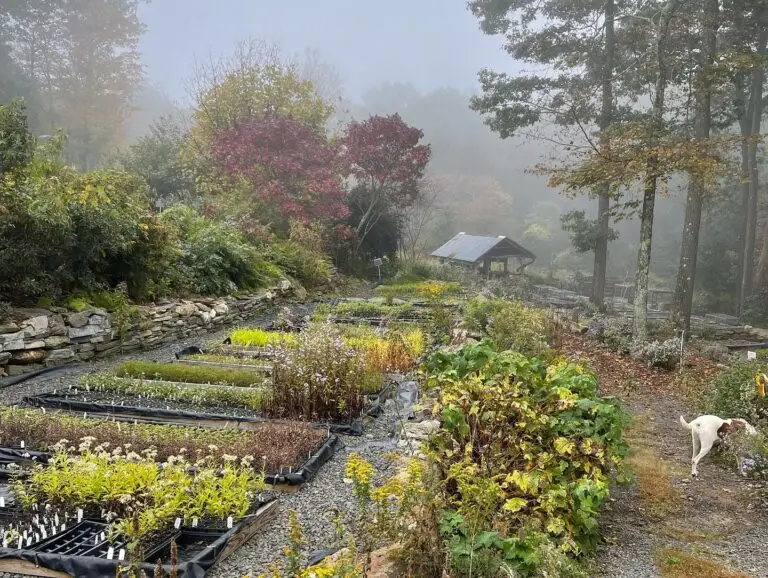
People feel empowered when they realize they can help the all important ecology of a place by something as simple as gardening! All they need to do is choose native plants for their ecoregion.
Lisa, you had the foresight to change the future when you started Earth Tones. Now, with over 20 years of growing native plants, what shifts have you seen?
Many people are now more knowledgeable. The word is out! People feel empowered when they realize they can help the all important ecology of a place by something as simple as gardening! All they need to do is choose native plants for their ecoregion. They come back to the nursery and share with us the butterflies and pollinators that now visit their yard or the new bird sightings. It’s very exciting!
What’s one thing you wish more people understood about the role of native plants in a changing climate?
The plants are our cushion, we need the native plants to support all the living things in our region. The plants are our base, they are the main carbon source for all other living things. Now more than ever we need to help the diminished populations of pollinators, birds and all the other fauna, including ourselves. The plants not only support our native fauna, but they help purify the air, carbon sequester, are amazing at erosion control, keeping the soils healthy by not needing harmful pesticides; they are resilient to New England weather patterns.
Where would you recommend they start if someone in Connecticut wants to learn more? (Besides visiting Earth Tones, of course!)
Read books by Doug Tallamy, and check the “nativeness” of plants by going to these web sites:
Also, look for Pollinator Pathway groups in your area: pollinatorpathway.org
We couldn’t agree more—those are invaluable resources for native plant lovers.
Lisa, thank you so much for sharing your journey, insights, and expertise. It’s been inspiring to hear about your work and the impact of Earth Tones. Wishing you continued success—happy planting!
Further information
Earth Tones Native Nursery
212 Grassy Hill Road, Woodbury, CT 06798
(203) 263-6626
Facebook | Instagram
